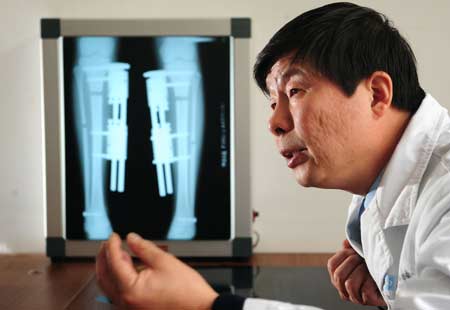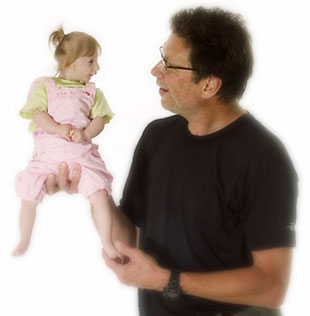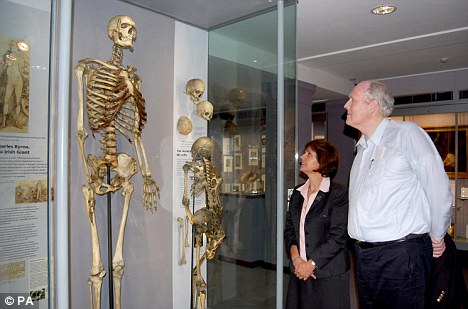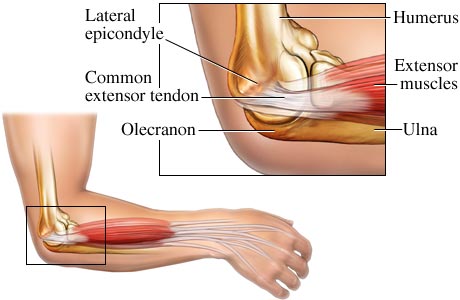 OK. The main reason why I wanted to write about this article and about this subject, the Chinese surgeons and doctors who are willing to operate on people to increase their height is because it is one of the most controversial since the cosmetic procedure is technically banned in China but many Chinese doctors are still willing to do the surgery for the money. In some ways, China is like the former USSR and even Russia today. Many of the most radical medical technology creations and innovations seem to come from these countries because they don’t seem to care as much as people in the US over human safety protocols and often are willing to bend or break international rules and laws to make things happen. I am not condemning the actions of these doctors since it was Ilizarov, a Russian Doctor who developed the original idea on how to make limb lengthening surgery work for people with real legitimate medical conditions. I guess sometimes one does have to break the rules and try news things for real innovation to happen.
OK. The main reason why I wanted to write about this article and about this subject, the Chinese surgeons and doctors who are willing to operate on people to increase their height is because it is one of the most controversial since the cosmetic procedure is technically banned in China but many Chinese doctors are still willing to do the surgery for the money. In some ways, China is like the former USSR and even Russia today. Many of the most radical medical technology creations and innovations seem to come from these countries because they don’t seem to care as much as people in the US over human safety protocols and often are willing to bend or break international rules and laws to make things happen. I am not condemning the actions of these doctors since it was Ilizarov, a Russian Doctor who developed the original idea on how to make limb lengthening surgery work for people with real legitimate medical conditions. I guess sometimes one does have to break the rules and try news things for real innovation to happen.
On the Make Me Taller boards I found a link to a rather well known distraction osteogenesis (aka limb and leg lengthening surgery) Chinese surgeon make some interesting claims that I found slightly ludicrous. The actual title to the Article is “Chinese Doctor Pioneers Height-Increase Surgery” . You can find the original article by clicking HERE.
As always, I will copy and paste the entire article right below, highlight the sections that I found the most fascinating ot most important, and then at the very bottom write a full review, analysis, or critique of the article and what it means for the application of height increase.
Chinese Doctor Pioneers Height-Increase Surgery
Updated Monday, April 12, 2010 11:26 am TWN, AFP -(Found on The China Post)
SHANGHAI — Orthopaedic surgeon Bai Helong hikes up his trousers, places his foot on his desk and marks the spot just below his hairless knee where he cuts into the legs of patients who want to be taller.
Over the past 15 years, Bai has given the gift of height to about 3,000 patients aged 14 to 55 — Chinese, Americans, Germans, Japanese — about half of whom went through with surgery simply because they did not like being short.
“I’m something of an authority in this field,” explains Bai, who uses a technique he developed himself at a modest private clinic in the suburbs of Shanghai.
He saws through both the tibia and the fibula below the knee — “without touching the bone marrow”, he says — to “make the dream come true” of those who say they suffer psychologically from being short.
One week later, the bones begin to regenerate. Heavy braces made of nickel and titanium, each weighing about half a kilo (one pound), are screwed into the inner part of the patient’s legs.
Every day for the following four months, Bai expands the braces to gradually stretch the leg.
“We need four months to get six to eight centimeters,” or two to three inches, the surgeon says. After that, for four more months, the bones get stronger and patients are allowed to begin to walk.
Leg-lengthening was first performed in the 1950s in the former Soviet Union, and then in China, but with sometimes catastrophic results.
In the past, the leg was cut in three places, affecting the delicate bone marrow, and pins were used to steady the bone. In some cases, one leg was left shorter than the other and infections were common.
Today, Bai says, the procedure is safe. Instead of stretching the leg by 1.0-1.5 millimeters a day as in the past, he aims to progress half as fast.
“We’ve not had a single failure since 1995, and now it’s not painful,” insists the doctor, who charges 75,000 yuan (US$11,000) for the surgery.
So who is willing to endure such a procedure, which involves months of total immobilization and a fair amount of discomfort?
“A small person can encounter all kinds of problems — in his or her marriage, family life, workplace,” Bai says.
“The person feels inferior, and experiences psychological problems. I even have met people who wanted to kill themselves.”
Dan Dan, a pretty 25-year-old Chinese woman who is studying Japanese, says she was unhappy when she stood 1.53 meters (five feet) tall. Four months after surgery at Bai’s clinic, she is smiling — and six centimeters taller.
“I wanted to improve my self-image. I am very happy,” says Dan Dan, grimacing as she walks at a snail’s pace on crutches through the halls of the clinic, her body contorted.
“I hope that within a year, I will be able to walk normally. Running, that’s another story,” she says.
Only Dan Dan’s mother is aware of what she is doing — her friends have no idea where she is.
“It seems pretty dangerous at the beginning — they cut through your bones, that is not really socially acceptable in China. It’s not like getting your eyelids done,” she explains, referring to a surgical procedure some Chinese women undergo to give them rounder, wider-looking eyes.
“I held off for a long time. I was really scared.”
Wang Lijun has not told her friends where she is either and as a result, they no longer contact her.
That was a price the 30-year-old was willing to pay during 13 months of treatment, which began in 2008 and took her from 1.52 meters to 1.60 meters — a height gain easily achieved with a pair of stilettos.
“It was my secret. I told no one,” says Wang, who now works on the administration side of Bai’s clinic and says she can run and jump “almost like before”.
“I had lost all of my self-confidence. I wanted a better life.”
Beyond the loss of her social circle, Wang says there were other sacrifices to make — the months of painful treatment, the dark, vicious-looking scars on her legs. Her next step? A plastic surgeon, perhaps.
Is Bai a miracle worker or a sorcerer’s apprentice with a screwdriver and a tire iron who is making a profit from the suffering of others?
The surgeon hits out at his critics, especially “those who oppose me without knowing what my work is all about”.
But as is often the case in China, Bai may be working in a grey zone.
Me: What is most interesting about the article is that this orthopaedic surgeon Bai Helong made a few claims in the article that made me really question whether he is being honest. The biggest claim is that his method, which he independently developed is NOT painful. I want to call him out on this bullshit. That is NOT fucking possible. The fact that he does have to cut a person’s long bones into separate pieces is A PAINFUL PROCESS. Even later in the article the author writes that the patients after surgery are getting around in an uncomfortable way. That means that they are in PAIN. I have read the diaries of other people who go through with this thing and there is no way that one can avoid pain. The Chinese surgeon is making it sound painless so that other people would consider using him as their surgeon than others who would scare them with stories of pain because they were just telling teh prospective patient the truth of the type of ordeal they have to go through.
The second issue I have with him was the extremely low price he put up. I think the article was written in before the last edited date which was in 2010 If I had to guess, I would say the article or the interview talk given by Bai Helong occurred in 2007 or 2008, maybe even earlier. He states that he charges $11,000 for the entire surgery. If you have ever done any research on the cost of limb lengthening surgery you would realize that the price eh gives is far , FAR lower than anything I have seen by any other surgeons who do the same type of surgery. The really low pricetag makes me suspicious and worried about his practices, since there are so many factors and surgical costs involved in this thing. Do remember the quote “If it seems to good to be true, it most likely is”.
The 3rd issue I have with Bai Helong is that apparently his device which works on the same principles as the Ilizarov Brace (and probably looks similar) is able to get 1.0-15. millimeters of bone expansion a day. That is not possible. The most advanced device that I know of which does distraction osteogenesis can do only 0.7 mm a day, not the 1.0-1.5 mm he stated. Going over the limit and trying to expand the human bone too quickly will lead to improperly boen healing and create many forms of complications. Not only that, Helong states that he is now developing a method that can double the speed of the leg expansion. REALLY?? How is that even possible?? I don’t believe he can do it, unless he has some form of magical healing potion he can pore into the separation space between the two separate bone pieces.
For a better understanding of who this Chinese Othopaedic surgeon Bai Helong is, I went back on the Make Me Taller boards to find out some more info about him. You can find the link to the discussion about him by clicking HERE. I will post what I believe are the best posts that are informative and insightful.
What is first very interesting is that this Dr. Bai was featured on a Oprah Show with Lisa Ling (you can find the link by clicking HERE)
These are other profile’s comments.
–I went there in September 2004 when I was 18. I stayed at the People’s 8th Hospital for 8 days and I talked to a lot of people that had gotten the surgery and were in the process of lengthening their legs or in the hardening process. I also met with people that arrived after I did and were going to get the surgery. I had made up my mind that I was going to get the surgery, but after I arrived I had to rethink it all over again and I ultimately decided not to get it. It was a very difficult decision. My biggest concern was amputation due to infection and at a very close second was disproportion because the femur in most people is usually ALWAYS longer than the tibia’s and fibula’s.
I spent days and hours in one guys room. I was closer to him than to anyone else. After 8 years of completely losing contact with him I found him again and he told me that “this” is banned in China. He did not specify if ONLY Microwound was banned in China or if Limb Lengthening is completely banned in China. I think that he meant that Limb Lengthening is banned in China. Apparently he was wrong if Doctors in Beijing, China are performing it.
He told me that the practice that Dr. Bai and Dr. Yude had in the People’s 8th Hospital in Chongqing, China was shut down. That is very unfortunate because I believe that this method is far superior to the Illizarov method. The Illizarov method pierces the muscles and leaves a lot of scars. It damages a lot of muscle tissue in the entire process. Microwound ONLY pierces the thin layer of skin and maybe some fat in the shin and then goes through the bone.
Does anyone have any reliable information as to what happened with Microwound? I went onto the web site and I have not gotten a response from and of the Doctors or staff. Back in 2002 – 2004 I always got quick responses from Dr. Ruan Yude. I had a great experience with them. Dr. Ruan Yude waited for me at the Chongqing Airport and we both got into a taxi. Once I arrived they did not pressure me AT ALL and they gave me as much time as I needed to decide again whether I wanted to get the surgery or not. In the end I decided not to get it but it doesn’t mean that I didn’t want to do it. If someone is going to get LL surgery they should go for both femurs and lower legs (tibia’s and fibula’s) along with UPPER and LOWER ARMS if they want to remain proportionate.
Their website looks like it hasn’t been tended to in a while.
So if anyone has information on this please respond. —
— Dr. Bai is no longer in Chongqing and has moved to a hospital in Shanghai. —
— In 2008 they moved from Chongqing to Shanghai. There is no way the surgery costs 12,000 Yuan, that would come out to $1887 United States Dollars. When I went to Chongqing, China in 2004 the price had just gone up from $9,000 to $10,000 USD. their website is www. heightincreasing. net
I have recently contacted them by email and my eyes opened wide and they still have not shut when I found out that they are asking $35,000 for the surgery. This price does not include the $1,000 a month hospital stay and $100 a month in food.
Back in 2004 the $9,000 – $10,000 asking price included the surgery, one year hospital stay with care, one year’s worth of three meals daily, physical examination before surgery, care during lengthening and care after lengthening for an entire year from the day that the surgery was conducted.
I don’t understand why this method is seldom talked about on this message board. Why is it not recommended? Why is everyone going to Beijing over this one? I think that this place is the best because it does not pierce the muscles and cause possible permanent muscle and tendon damage. I have seen it with my own eyes. I have been there and talked for days and hours with people that had the microwound device implanted on their shins. One guy that I was the closest to I have spoken to after 8 years and he has changed a lot. He even deleted his email account right after he gave it to me back in September 2004. I lost all contact with him for over 7 years until 2011 I found him on Facebook. He gets very angry when I bring up LL and he refuses to talk about it and to explain to me in depth in detail how his body feels. He won’t even send me pictures or go into any explanation which would a HUGE help for me. After 8 years of recovery it would be enough time to know if one can actually be back to 100%.
I also remember him telling me that he would remove the device back home. He stayed in Chongqing for about 8 months from February 2004 to early October 2004. A few months later he removed the microwound device by himself at his home.
I got the emails of a few other guys that were lengthening in Chongqing, but they never responded back to my 2004 and 2005 emails. —
— Hi, sorry about the price info, it is actually 120,000 yuan (I miss typed) says on the question board. Maybe this is the price for the Chinese citizens only. And for those who’s considering micro-wound I think it is best to avoid it because I got a very mixed reiviews from chinese forum who underwent LL using this device. And as I look through the question board, it mentions that Dr. Ruan is retired and no longer doing this surgery, only Dr. Bai is doing it using this device in Harbin but not in Shanghai. He says that the website/clinic in shanghai is not legit, someone else is using his name to perform the surgery, then when I ask him how can I verify, he simply gave me his phone number from the website I mentioned and ask me to call him. So, the guy from Shanghai might really be an impersonator.
To plastikman: The device is not well known is because the doctors want to keep it a low profile and I am not sure why. However, he does speak good thing about Dr. Xia’s method and said you can recover faster when comparing to micro-wound. Hope this helps. —
— To plastikman: it is an external device they goes on the boney part of the shins. It pierces the thin layer of skin and then goes into the bone. It completely avoids piercing through the muscle. Most people that get microwound get it on the tibia’s and fibula’s. I don’t have the exact numbers on me, but when I was in China in 2004 it seemed that probably 95% or more of everyone that gets Microwound exclusively gets it done on their tibia’s and fibula’s. Touch your shin. immediately as you work your way to the outside part of the shin you will feel muscle. This device is implanted on the boney part so when they are installed they are facing in towards each other. There are pictures on their web site: www. heightincreasing. net
to farewell: thank you so much for that information. I don’t know how you find out this stuff, but thanks. The whole thing about them moving to Shanghai and operating through a different doctor sounded VERY suspect, but my desperation may cause me to make huge mistakes when it comes to my irreplaceable body and difficult to make money. The girl that works for this doctor told me in an email that the total cost is $35,000 plus room and board which would probably come out to $40,00 to $45,000. I really felt that they were trying to rip me off when they gave me that price. I tried to haggle it down to $20,000 and after three days they still have not responded back to me.
I just checked back to this message board for the first time since June 18. I guess that I was not too far off. I offered them $20,000 and farewell says that the surgery actually costs 120,000 Yuan which comes out to $18,848 USD. I had a feeling that I should have started off at $15,000 because I had a huge intuition that they were trying to really ripping me off bad.
Farewell; how did you get Dr. Bai’s contact information? I am very hesitant in dealing with this Shanghai hospital. I also don’t understand why you claim that getting Dr. Xia’s method allows faster recovery. Microwound is a lot less invasive. Does the piercing of muscle by getting the conventional Illizarov method have an affect? Most importantly do people getting LL recover back 100% to the way they were before LL? Are their bodies the same way post LL as if they had NEVER gotten the surgery? Can people run, jump and move just as well as they did before LL?
Also one more note about that guy that I met in Chongqing in 2004. He also refuses to talk to me period; whether it is about Microwound or not. Well I should not even mention Microwound because he will probably not even acknowledge its existence. He just refuses to talk to me at all. He was such a spiritual and nice guy that is surprises me that he would be that way. He won’t help me out. After I received his last email in May 2012, he told me that that would be the last response that I would ever get from him. He told me that LL is not for me. He told me to move on with my life and to go to church to worship God. —
Conclusion: The method proposed by this chinese surgeon Bai Helong is called “Micro-Wound Procedure”.
leg lengthening. This procedure uses a fixative clip instead of an Ilizarov fixator. The fixator clip covers
just one side of the leg and appears to be more comfortable than the Ilizarov fixator which completely
surrounds the leg.

Most people on the Make Me Taller Boards and people who worked with him have given bad reviews and said that the price of the surgery was always a big problem. I guess this guy is running certain practices not completely ethically. So I am going to guess that this Bai Helong Surgeon is probably lying about certain parts of his offered services. If you want to get limb and leg lengthening surgery and really decide to go to China for it, me and others suggest that you avoid this surgeon because he is being unethical in his practices and lying about certain things.




